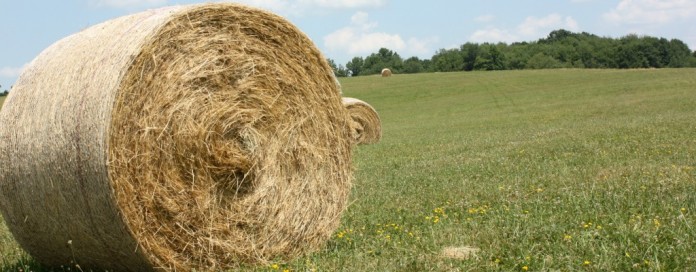CLEMSON, S.C. — Agricultural engineers at Clemson University have developed technology to tell farmers exactly where to apply fertilizers to their hay fields and how much to use to maximize profits.
“Hay is the No. 3 commercial crop in the United States, yet it is does not have a broadly implemented yield monitor,” said graduate research assistant Perry Loftis, who is working with Clemson agriculture engineer, Kendall Kirk, to rectify that.
Along with former graduate student Guy Ramsey, they have developed two technologies that enable growers to map high- or low-yielding sections of a field. This information prevents farmers from over- and under-applying fertilizers in blanket applications.
Weighing bales
One technology installs on a round hay baler’s hydraulic kicker and weighs round bales as they are ejected from the machine. The other uses ultrasonic sensors that mount on the tongue of any baler and continuously measure height of the windrow — a row of cut hay — as the harvester rolls through the field.
Windrow height can be correlated to hay yield.
“Our key objectives were to build an inexpensive product so you can get a return on investment on it,” Kirk said at the Hay Production Field Day and Workshop at Clemson’s Edisto Research and Field Day.
“In addition, we wanted to build a product that will work on any baler, round baler, small square baler or large square baler,” he continued. “This windrow measurement is not dependent on any internal mechanism on the baler.”
Precision agriculture
Kirk’s work with yield monitors is part of the growing precision agriculture program at the Edisto REC.
Precision agriculture utilizes farming data and technology to reduce waste and optimize farm equipment and materials by targeting the amount and locations of water, fertilizer and chemical applications to the specific areas of a field where the products are needed.
Most growers blanket fertilizers over fields, not accounting for high-yielding spots that pull more nutrients from the soil, Kirk said. As a result, the best spots in a field may under-perform the following year because they are nutrient-deficient, he said.
Conversely, these blanket fertilizer treatments lead to over-application in parts of the field that, for varying reasons, do not produce strong yields. Yield monitors can improve that by allowing for variable rate applications throughout a field.
“What you are doing is maximizing profitability,” Kirk said.
Kirk continues to test the products with efforts to work with manufacturers to bring them to the market for growers. He also is conducting a cost-benefit analysis of the hay-yield monitors, but does not have concrete data yet.
The cost
Yield-monitoring systems cost an estimated $5,000, Loftis said. If the technology increased yields just 1 percent on average or reduced input costs by 2 percent, farmers would recoup investments on the technology in the first year, he said. That’s based on an estimated 29,000 hay balers active in the U.S., with each harvesting about $500,000 in hay a year, according to federal figures.












